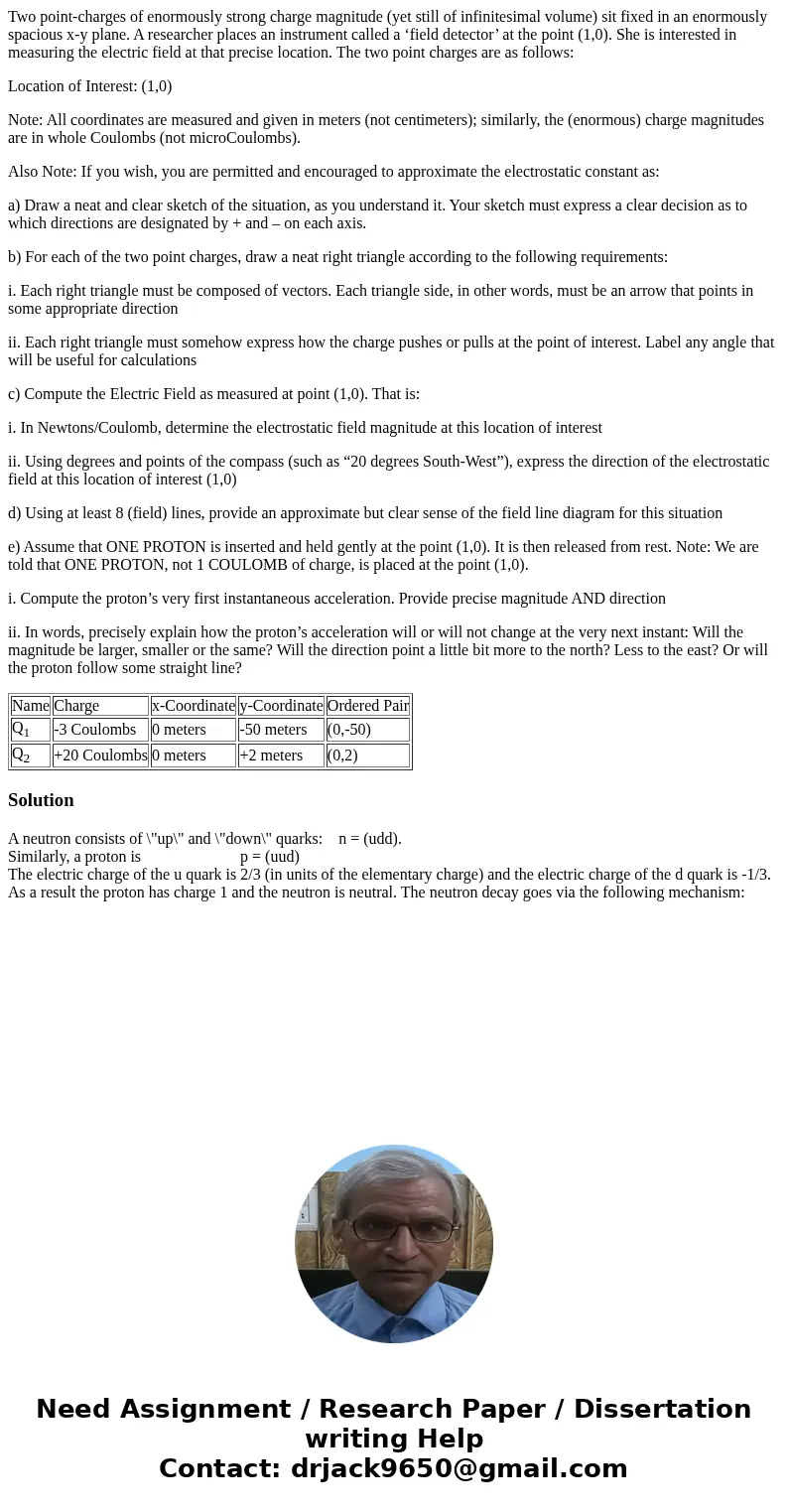Two pointcharges of enormously strong charge magnitude yet s
Two point-charges of enormously strong charge magnitude (yet still of infinitesimal volume) sit fixed in an enormously spacious x-y plane. A researcher places an instrument called a ‘field detector’ at the point (1,0). She is interested in measuring the electric field at that precise location. The two point charges are as follows:
Location of Interest: (1,0)
Note: All coordinates are measured and given in meters (not centimeters); similarly, the (enormous) charge magnitudes are in whole Coulombs (not microCoulombs).
Also Note: If you wish, you are permitted and encouraged to approximate the electrostatic constant as:
a) Draw a neat and clear sketch of the situation, as you understand it. Your sketch must express a clear decision as to which directions are designated by + and – on each axis.
b) For each of the two point charges, draw a neat right triangle according to the following requirements:
i. Each right triangle must be composed of vectors. Each triangle side, in other words, must be an arrow that points in some appropriate direction
ii. Each right triangle must somehow express how the charge pushes or pulls at the point of interest. Label any angle that will be useful for calculations
c) Compute the Electric Field as measured at point (1,0). That is:
i. In Newtons/Coulomb, determine the electrostatic field magnitude at this location of interest
ii. Using degrees and points of the compass (such as “20 degrees South-West”), express the direction of the electrostatic field at this location of interest (1,0)
d) Using at least 8 (field) lines, provide an approximate but clear sense of the field line diagram for this situation
e) Assume that ONE PROTON is inserted and held gently at the point (1,0). It is then released from rest. Note: We are told that ONE PROTON, not 1 COULOMB of charge, is placed at the point (1,0).
i. Compute the proton’s very first instantaneous acceleration. Provide precise magnitude AND direction
ii. In words, precisely explain how the proton’s acceleration will or will not change at the very next instant: Will the magnitude be larger, smaller or the same? Will the direction point a little bit more to the north? Less to the east? Or will the proton follow some straight line?
| Name | Charge | x-Coordinate | y-Coordinate | Ordered Pair |
| Q1 | -3 Coulombs | 0 meters | -50 meters | (0,-50) |
| Q2 | +20 Coulombs | 0 meters | +2 meters | (0,2) |
Solution
A neutron consists of \"up\" and \"down\" quarks: n = (udd).
Similarly, a proton is p = (uud)
The electric charge of the u quark is 2/3 (in units of the elementary charge) and the electric charge of the d quark is -1/3. As a result the proton has charge 1 and the neutron is neutral. The neutron decay goes via the following mechanism:

 Homework Sourse
Homework Sourse